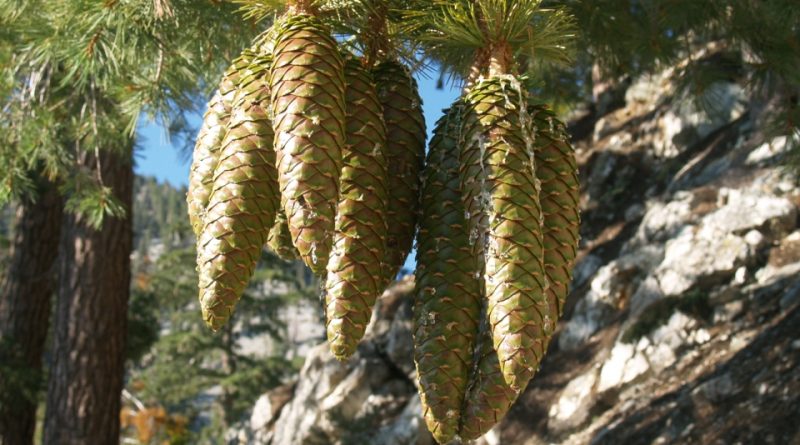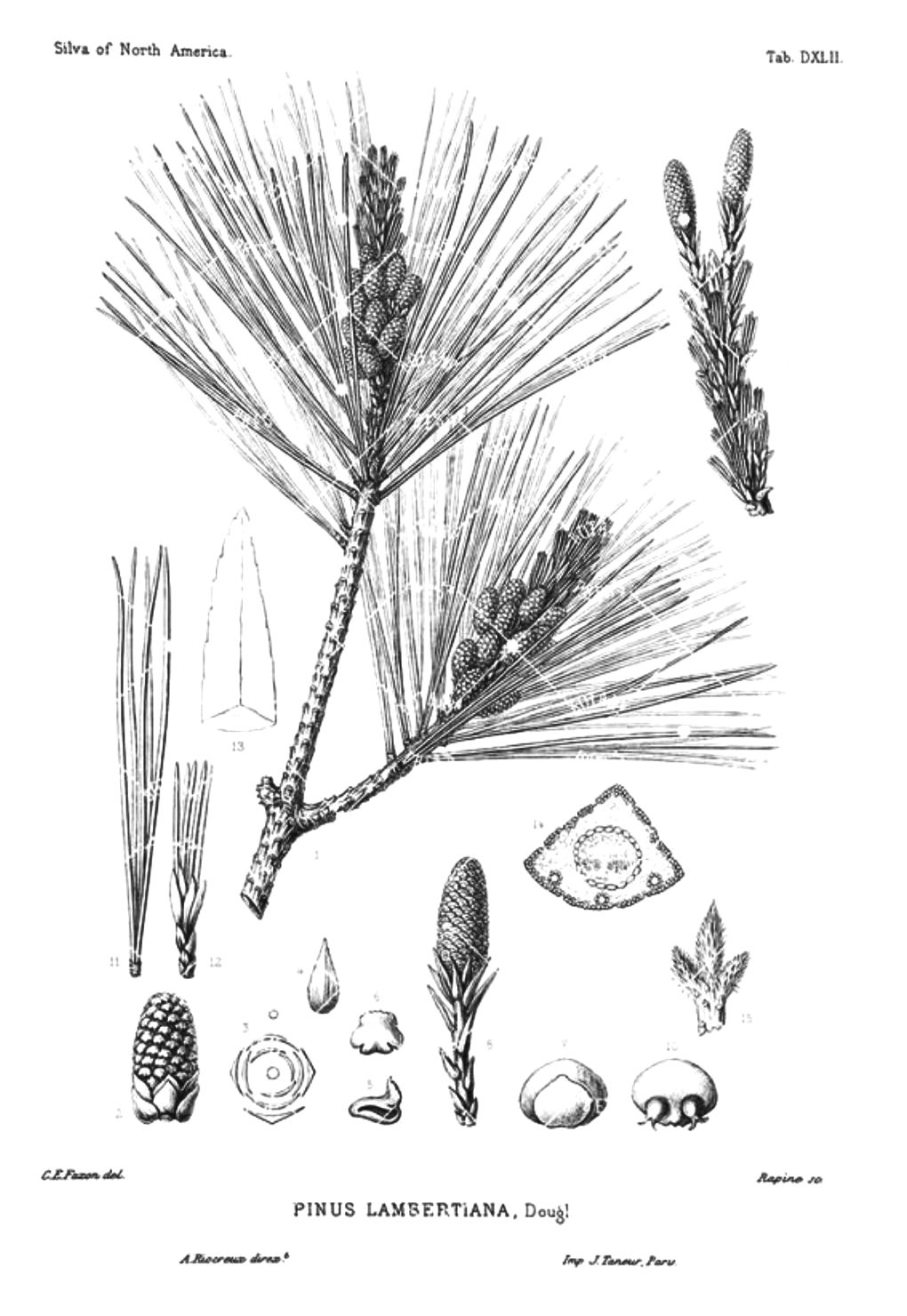Pinus lambertiana
Pinus lambertiana
Lambert’s Pine, commonly known also as Swiss Pine or Sugar Pine (Pinus lambertiana Dougl.) is an arboreal species belonging to the Pinaceae family.
Systematics –
From a systematic point of view it belongs to the Eukaryota Domain, Kingdom Plantae, Pinophyta Division, Pinopsida Class, Pinales Order, Pinaceae Family and therefore to the Pinus Genus and to the P. lambertiana Species.
Etymology –
The term Pinus is the Latin name of the pine tree, associated with the Sanskrit pítu resinous, cited by Pliny, Virgil and others. The specific Lambertian epithet was attributed in honor of the English botanist Aylmer Bourke Lambert (1761-1842) author of A description of the genus Pinus.
Geographic Distribution and Habitat –
Pinus lambertiana is the tallest and most massive pine, with the longest cones of any conifer. The name of the Lambertian species was given by the British botanist David Douglas in honor of the English botanist Aylmer Bourke Lambert. It is native to the mountains of the Pacific coast of North America, from Oregon to California to Baja California. In Europe it is found only in arboretums (Arboretum of Vallombrosa).
Description –
The Pinus lambertiana is the largest and highest pine in the world and can reach 75 meters. The bark is greyish brown, vertically fissured, with very long needle-like leaves.
The flowers are fragrant, monoic; the cones (over 60 cm) are longer than any other conifer, pendulous, carried by a peduncle of about fifteen centimeters formed by flakes of almost dense consistency.
Cultivation –
For its cultivation it should be taken into account that, in its natural environment, the Pinus lambertiana lives at variable altitudes depending on the latitude, between 300 and 3200 meters above sea level, usually in mixed coniferous forests in mountain environment.
This species requires a medium to fine, not heavy, well drained soil, even if poor from the nutritional point of view but with a neutral or acidic pH. It does not grow in the shade nor in maritime exhibitions; it tolerates dryness when it is well established and developed. For the propagation it is possible to start from seed or directly in the autumn to the harvest of the seeds, or in the late winter, in individual containers to avoid the seedlings the stress of the repotting. If necessary, a cold stratification can be carried out at 4 ° C for 6 weeks to increase the seed germination percentage. As soon as possible, the plant should be planted, taking care only to protect the plant during its first two winters in the open and maintain a mulch that inhibits the growth of weeds in the immediate vicinity.
Pinus lambertiana is a species that can not tolerate transplants, which disturb the root system and compromise the stability of the tree against strong winds.
Eventually it is possible to try to propagate the plant by cutting using a single file of needles taken from plants with less than ten years of life, but the growth is very slow. As in the other pines, the secretion inhibiting the germination of the seeds, which washed away from its needles falls on the ground, hinders the proliferation of the lawn under its foliage.
Uses and Traditions –
Native Americans used the large and nutritious seeds of this pine and its sweet sap as food. It was also used as a remedy to treat intestinal gases, as a laxative or, mixed with milk, as eye drops for irritated eyes. The “dice” (seeds) were used as pearls in jewelry. Pinitol, the sugary substance present in this pine, is under analysis of scientific research to find out if it has properties that sensitize insulin muscles.
The first European settlers discovered the value of Pinus lambertiana as a wooden tree; in fact, it possesses a huge volume and light wood, straight grained, without knots, easily workable that has no taste or scent. Many of the uses to which sugar pines are subjected are considered a waste, such as the manufacture of crunches and handmade tiles, as these giant trees are only partly used and left to rot on the spot, or large trees are dropped. dimensions to use only the end to create corrals for livestock and other fences.
Modern uses exploit the virtues of wood by creating containers for fruit or pharmaceutical products, large tables without knots, various worked, including piano and organ keys.
Preparation Mode –
Sugar pine was used, especially in the past for its seeds and its sweetish taste. Today some of its active ingredients are used for pharmaceutical purposes.
Guido Bissanti
Sources
– Acta Plantarum – Flora of the Italian Regions.
– Wikipedia, the free encyclopedia.
– Treben M., 2000. Health from the Pharmacy of the Lord, Advice and experience with medicinal herbs, Ennsthaler Publisher
– Pignatti S., 1982. Flora of Italy, Edagricole, Bologna.
– Conti F., Abbate G., Alessandrini A., Blasi C. (edited by), 2005. An annotated checklist of the Italian vascular flora, Palombi Editore.
Attention: Pharmaceutical applications and alimurgical uses are indicated for informational purposes only, they do not in any way represent a medical prescription; there is therefore no liability for their use for curative, aesthetic or food purposes.


